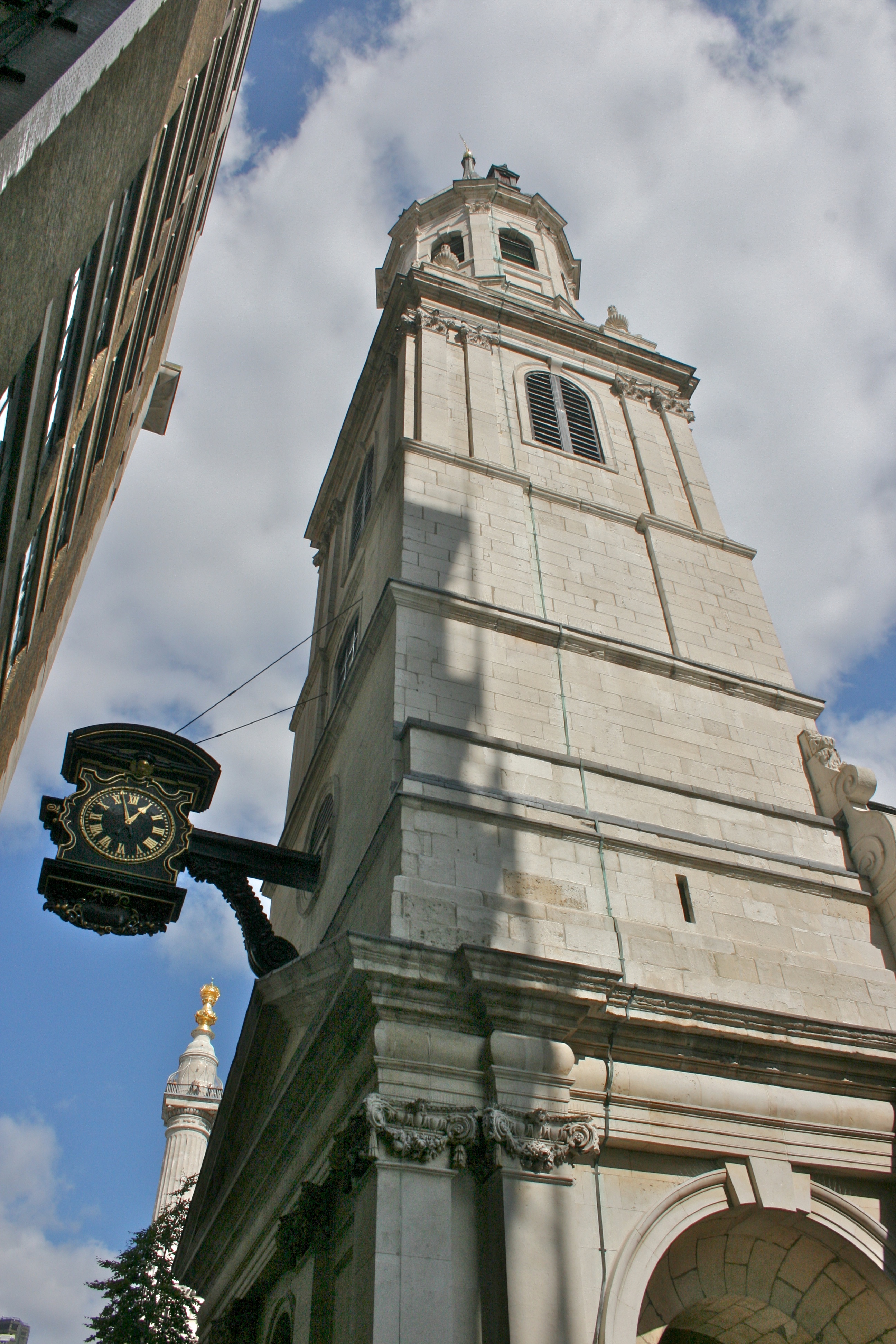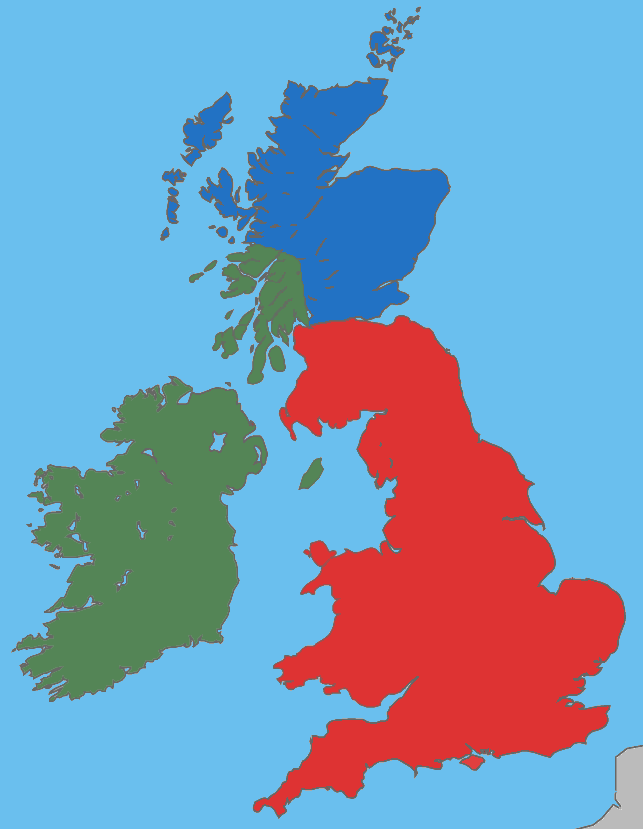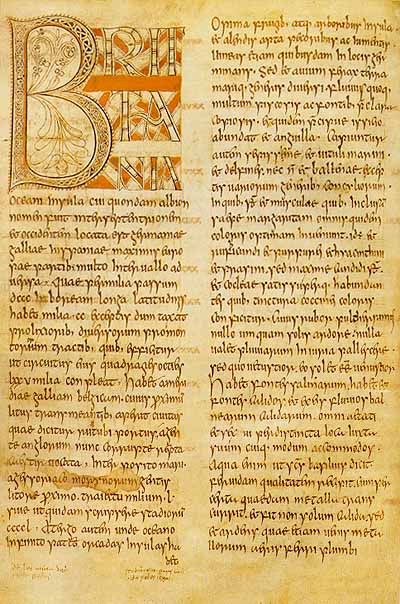|
Breedon On The Hill
Breedon on the Hill is a village and civil parish about north of Ashby-de-la-Zouch in North West Leicestershire, England. The parish adjoins the Derbyshire county boundary and the village is only about south of the Derbyshire town of Melbourne. The 2001 Census recorded a parish population (including Isley and Wilson) of 958 people in 404 households. The parish includes the hamlets of Tonge east of the village and Wilson north of the village on the county boundary. The population at the 2011 census (including Isley cum Langley and Langley Priory) was 1,029 in 450 households. Geography Breedon is notable for its Carboniferous limestone hill that rises above sea level in a generally low-lying landscape and affords distant views across several counties. A large portion of the hill has been cut away by an active quarry now operated by the Breedon Group. This currently produces limestone and gravel. It has also produced sand. On top of the hill is The Bulwarks Iron Age hi ... [...More Info...] [...Related Items...] OR: [Wikipedia] [Google] [Baidu] |
United Kingdom Census 2001
A nationwide census, known as Census 2001, was conducted in the United Kingdom on Sunday, 29 April 2001. This was the 20th Census in the United Kingdom, UK census and recorded a resident population of 58,789,194. The 2001 UK census was organised by the Office for National Statistics (ONS) in England and Wales, the General Register Office for Scotland (GROS) and the Northern Ireland Statistics and Research Agency (NISRA). Detailed results by region, council area, ward and ONS coding system, output area are available from their respective websites. Organisation Similar to previous UK censuses, the 2001 census was organised by the three statistical agencies, ONS, GROS, and NISRA, and coordinated at the national level by the Office for National Statistics. The Order in Council#Orders in Council as Statutory Instruments, Orders in Council to conduct the census, specifying the people and information to be included in the census, were made under the authority of the Census Act 1920 in ... [...More Info...] [...Related Items...] OR: [Wikipedia] [Google] [Baidu] |
Church Of England Parish Church
A parish church in the Church of England is the church which acts as the religious centre for the people within each Church of England parish (the smallest and most basic Church of England administrative unit; since the 19th century sometimes called the ecclesiastical parish, to avoid confusion with the civil parishes in England, civil parish which many towns and villages have). In many English villages the church is a prominent landmark and its tower is often the tallest structure in the settlement. Parishes in England In England, there are parish churches for both the Church of England and the Roman Catholic Church. References to a "parish church", without mention of a denomination, will, however, usually be to those of the Church of England due to its status as the Established Church. This is generally true also for Wales, although the Church in Wales is Welsh Church Act 1914, dis-established. The Church of England is made up of parishes, each one forming part of a dioce ... [...More Info...] [...Related Items...] OR: [Wikipedia] [Google] [Baidu] |
Oxford Dictionary Of Saints
The ''Oxford Dictionary of Saints'' by David Hugh Farmer is a concise reference compilation of information on more than 1300 saints and contains over 1700 entries. It is published by Oxford University Press Oxford University Press (OUP) is the publishing house of the University of Oxford. It is the largest university press in the world. Its first book was printed in Oxford in 1478, with the Press officially granted the legal right to print books .... The first edition was published in 1978. A fifth revised edition was published in 2011. References Oxford dictionaries 1978 non-fiction books {{Dictionary-stub ... [...More Info...] [...Related Items...] OR: [Wikipedia] [Google] [Baidu] |
British Library
The British Library is the national library of the United Kingdom. Based in London, it is one of the largest libraries in the world, with an estimated collection of between 170 and 200 million items from multiple countries. As a legal deposit library, it receives copies of all books produced in the United Kingdom and Ireland, as well as a significant proportion of overseas titles distributed in the United Kingdom. The library operates as a non-departmental public body sponsored by the Department for Culture, Media and Sport. The British Library is a major research library, with items in many languages and in many formats, both print and digital: books, manuscripts, journals, newspapers, magazines, sound and music recordings, videos, play-scripts, patents, databases, maps, stamps, prints, drawings. The Library's collections include around 14 million books, along with substantial holdings of manuscripts and items dating as far back as 2000 BC. The library maintains a programme for ... [...More Info...] [...Related Items...] OR: [Wikipedia] [Google] [Baidu] |
Eardwulf Of Northumbria
Eardwulf (fl. 790 – 830) was king of Northumbria from 796 to 806, when he was deposed and went into exile. He may have had a second reign from 808 until perhaps 811 or 830. Northumbria in the last years of the eighth century was the scene of dynastic strife between several noble families: in 790, king Æthelred I attempted to have Eardwulf assassinated. Eardwulf's survival may have been viewed as a sign of divine favour. A group of nobles conspired to assassinate Æthelred in April 796 and he was succeeded by Osbald: Osbald's reign lasted only twenty-seven days before he was deposed and Eardwulf became king on 14 May 796. Little is recorded of Eardwulf's family, though his father, also named Eardwulf, is known to have been a nobleman. Eardwulf was married by the time he became king, though his wife's name is not recorded. It is possible he later wed an illegitimate daughter of Charlemagne. In 798, early in his reign, Eardwulf fought a battle at Billington Moor against a ... [...More Info...] [...Related Items...] OR: [Wikipedia] [Google] [Baidu] |
Church Of St Mary And St Hardulph, Breedon On The Hill
The Priory Church of St Mary and St Hardulph is the Church of England parish church of Breedon on the Hill, Leicestershire, England. The church has also been known as Breedon Priory. The present church, which had been preceded by a minster (an Anglo-Saxon monastery) from the 7th century, contains the largest collection, and some of the finest examples, of Anglo-Saxon art, Anglo-Saxon sculptures. It also contains a notable family pew and Renaissance-era English church monuments, church monuments to the Shirley family, who bought the Manorialism, manor of Breedon after it was surrendered to the Crown in 1539 during the Dissolution of the Monasteries. The largest of these monuments is for Sir George Shirley. It was made over 20 years before his death and includes a life-sized skeleton carved in alabaster. The church stands on the top of Breedon Hill, within the remains of an British Iron Age, Iron Age hill fort called The Bulwarks. The hill is flanked to the south by the 400 houses ... [...More Info...] [...Related Items...] OR: [Wikipedia] [Google] [Baidu] |
Oxford University Press
Oxford University Press (OUP) is the publishing house of the University of Oxford. It is the largest university press in the world. Its first book was printed in Oxford in 1478, with the Press officially granted the legal right to print books by decree in 1586. It is the second-oldest university press after Cambridge University Press, which was founded in 1534. It is a department of the University of Oxford. It is governed by a group of 15 academics, the Delegates of the Press, appointed by the Vice Chancellor, vice-chancellor of the University of Oxford. The Delegates of the Press are led by the Secretary to the Delegates, who serves as OUP's chief executive and as its major representative on other university bodies. Oxford University Press has had a similar governance structure since the 17th century. The press is located on Walton Street, Oxford, Walton Street, Oxford, opposite Somerville College, Oxford, Somerville College, in the inner suburb of Jericho, Oxford, Jericho. ... [...More Info...] [...Related Items...] OR: [Wikipedia] [Google] [Baidu] |
Old English
Old English ( or , or ), or Anglo-Saxon, is the earliest recorded form of the English language, spoken in England and southern and eastern Scotland in the Early Middle Ages. It developed from the languages brought to Great Britain by Anglo-Saxon settlers in the mid-5th century, and the first Old English literature dates from the mid-7th century. After the Norman Conquest of 1066, English was replaced for several centuries by Anglo-Norman language, Anglo-Norman (a langues d'oïl, type of French) as the language of the upper classes. This is regarded as marking the end of the Old English era, since during the subsequent period the English language was heavily influenced by Anglo-Norman, developing into what is now known as Middle English in England and Early Scots in Scotland. Old English developed from a set of Anglo-Frisian or Ingvaeonic dialects originally spoken by Germanic tribes traditionally known as the Angles (tribe), Angles, Saxons and Jutes. As the Germanic settlers ... [...More Info...] [...Related Items...] OR: [Wikipedia] [Google] [Baidu] |
Brittonic Language
The Brittonic languages (also Brythonic or British Celtic; ; ; and ) form one of the two branches of the Insular Celtic languages; the other is Goidelic. It comprises the extant languages Breton, Cornish, and Welsh. The name ''Brythonic'' was derived by Welsh Celticist John Rhys from the Welsh word , meaning Ancient Britons as opposed to an Anglo-Saxon or Gael. The Brittonic languages derive from the Common Brittonic language, spoken throughout Great Britain during the Iron Age and Roman period. In the 5th and 6th centuries emigrating Britons also took Brittonic speech to the continent, most significantly in Brittany and Britonia. During the next few centuries, in much of Britain the language was replaced by Old English and Scottish Gaelic, with the remaining Common Brittonic language splitting into regional dialects, eventually evolving into Welsh, Cornish, Breton, Cumbric, and probably Pictish. Welsh and Breton continue to be spoken as native languages, while a revival ... [...More Info...] [...Related Items...] OR: [Wikipedia] [Google] [Baidu] |
Ecclesiastical History Of The English People
The ''Ecclesiastical History of the English People'' (), written by Bede in about AD 731, is a history of the Christian Churches in England, and of England generally; its main focus is on the growth of Christianity. It was composed in Latin, and is believed to have been completed in 731 when Bede was approximately 59 years old. It is considered one of the most important original references on Anglo-Saxon history, and according to some scholars has played a key role in the development of an English national identity. Overview The , or ''An Ecclesiastical History of the English People'', is Bede's best-known work, completed in about 731. The first of the five books begins with some geographical background and then sketches the history of England, beginning with Julius Caesar's invasion in 55 BC. A brief account of Christianity in Roman Britain, including the martyrdom of St Alban, is followed by the story of Augustine's mission to England in 597, which brought Christianity to the ... [...More Info...] [...Related Items...] OR: [Wikipedia] [Google] [Baidu] |
Donington Park Motor Circuit
Donington Park is a motorsport circuit located near Castle Donington in Leicestershire, England. The circuit business is now owned by Jonathan Palmer's MotorSport Vision organisation, and the surrounding Donington Park Estate, still owned by the Wheatcroft family, is currently under lease by MotorSport Vision until 2038. It has a capacity of 120,000, and is also the venue of the Download Festival. Originally part of the Donington Hall estate, it was created as a racing circuit during the period between the First and Second World Wars when the German Silver Arrows were battling for the European Championship. Used as a military vehicle storage depot during the Second World War, it fell into disrepair until bought by local construction entrepreneur Tom Wheatcroft. Revived under his ownership in the 1970s, it hosted a single Formula One race in 1993, but became the favoured home of the British round of the MotoGP motorcycling championship. Leased by Donington Ventures Leisure Lt ... [...More Info...] [...Related Items...] OR: [Wikipedia] [Google] [Baidu] |
River Trent
The Trent is the third Longest rivers of the United Kingdom, longest river in the United Kingdom. Its Source (river or stream), source is in Staffordshire, on the southern edge of Biddulph Moor. It flows through and drains the North Midlands into the Humber Estuary. The river is known for dramatic flooding after storms and spring snowmelt, which in the past often caused the river to change course. The river passes through Stoke-on-Trent, Stone, Staffordshire, Rugeley, Burton-upon-Trent and Nottingham before joining the River Ouse, Yorkshire at Trent Falls to form the Humber Estuary, which empties into the North Sea between Kingston upon Hull in Yorkshire and Immingham in Lincolnshire. The wide Humber estuary has often been described as the boundary between the Midlands and the north of England. Name The name "Trent" is possibly from a Romano-British word meaning "strongly flooding". More specifically, the name may be a contraction of two Romano-British words, ''tros'' ("over" ... [...More Info...] [...Related Items...] OR: [Wikipedia] [Google] [Baidu] |








